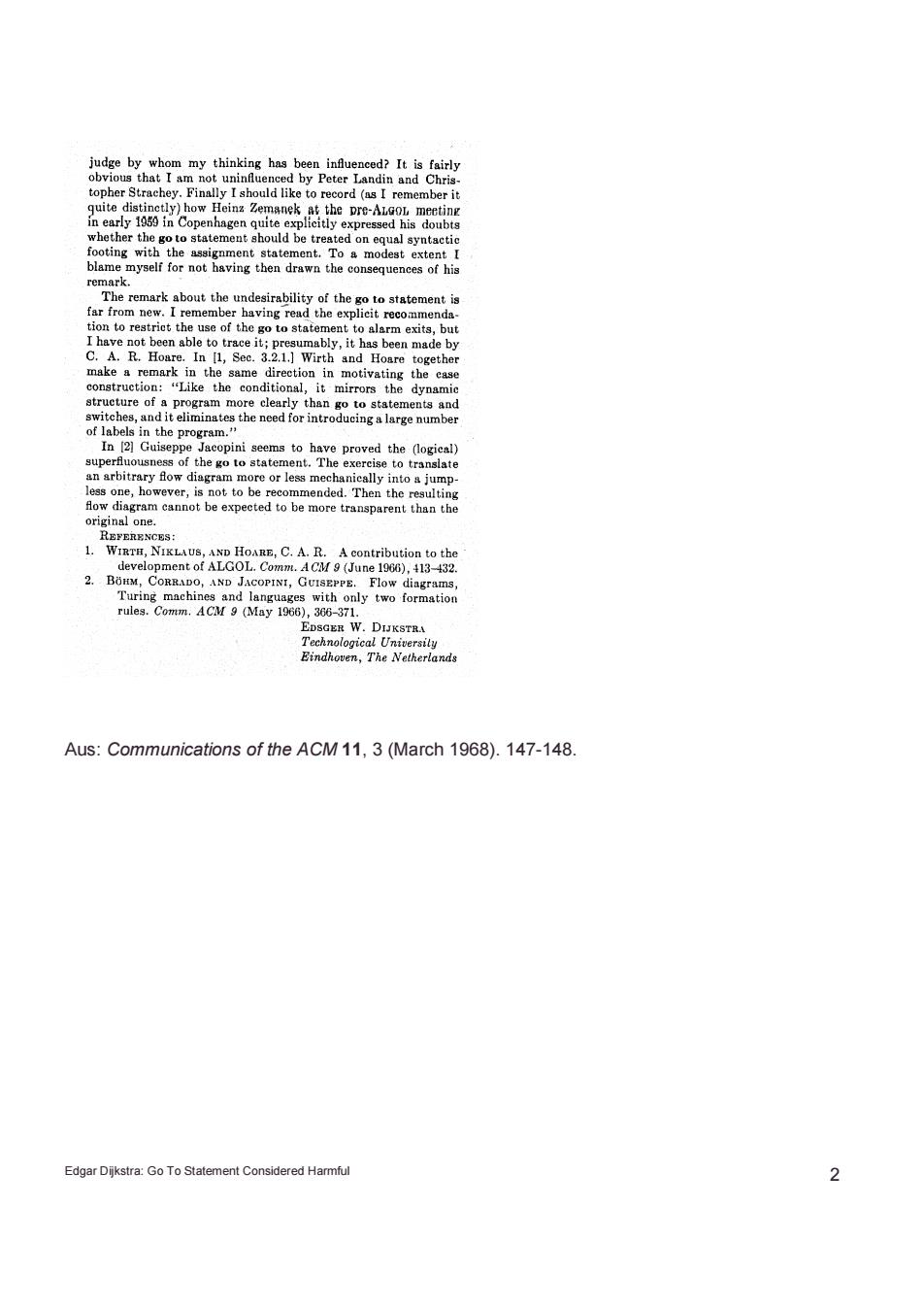正在加载图片...

judge by whom my thinking has been influenced?It is fairly obvious that I am not uninfluenced by Peter Landin and Chris- topher Strachey.Finally I should like to record(as I remember it quite distinctly)how Heinz Zemanek at the pre-ALGoL meeting in early 1959 in Copenhagen quite explicitly expressed his doubts whether the go to statement should be treated on equal syntactic footing with the assignment statement.To a modest extent I blame myself for not having then drawn the consequences of his remark. The remark about the undesirability of the go to statement is far from new.I remember having read the explieit recommenda- tion to restrict the use of the go to statement to alarm exits,but I have not been able to trace it;presumably,it has been made by C.A.R.Hoare.In [1,See.3.2.1.]Wirth and Hoare together make a remark in the same direction in motivating the ease construction:"Like the conditional,it mirrors the dynamic structure of a program more elearly than go to statements and switches,and it eliminates the need for introducing a large number of labels in the program." In [2]Guiseppe Jacopini seems to have proved the (logical) superfluousness of the go to statement.The exercise to translate an arbitrary flow diagram more or less mechanically into a jump- less one,however,is not to be recommended.Then the resulting How diagram cannot be expected to be more transparent than the original one. REFERENCES: 1. WIRTH,NIKLAUS,AND HOARE,C.A.R.A contribution to the development of ALGOL.Comm.ACM 9 (June 1966),413-432. 2.BOHM,CoRRADO,AND JACOPINI,GUISEPPE.Flow diagrams. Turing machines and languages with only two formation rules.Comm.ACM 9 (May 1966),366-371. EDSGER W.DIJKSTRA Technological Universily Eindhoven,The Netherlands Aus:Communications of the ACM11,3(March 1968).147-148. Edgar Dijkstra:Go To Statement Considered Harmful 2Edgar Dijkstra: Go To Statement Considered Harmful 2 Aus: Communications of the ACM 11, 3 (March 1968). 147-148